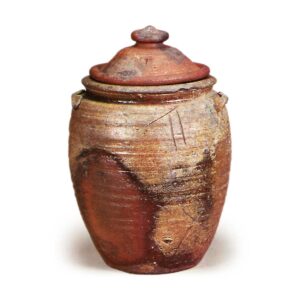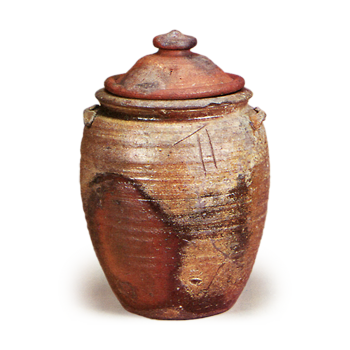
From the ancient kilns of Iga, Shigaraki, Bizen, Tokoname, Seto, and other regions, pots called tane jars and tane soaking jars have been produced for hundreds of years. All of these types of pots were fired unglazed. The shapes are also rustic and austere, with no hint of artistry, and they are highly prized by tea masters as incomparable flower vases. Seed pots were used by farmers in the past to store seeds, and had three or four ears. They were probably filled with seeds and covered with a lid, and a string was inserted through the ears to hold the lid in place. Some have no ears. The ones with ears merely for decoration were imitations made in later periods and are said to have been made as tea utensils. In addition to flower vases, large-mouthed vases are also used as water jars. Seed soaking jars are used to soak seeds in water and have no ears. In addition to flower vases, they are used for water jars and tea pots. Seed jars and seed-dipping jars from Iga and Shigaraki are particularly well known and loved, and the stone washbasin (kuju) that tea ceremony masters love as a hanging flower vase is also said to be of this type.
In recent years, however, new research has suggested that these pots were not agricultural implements but rather coin pots.



